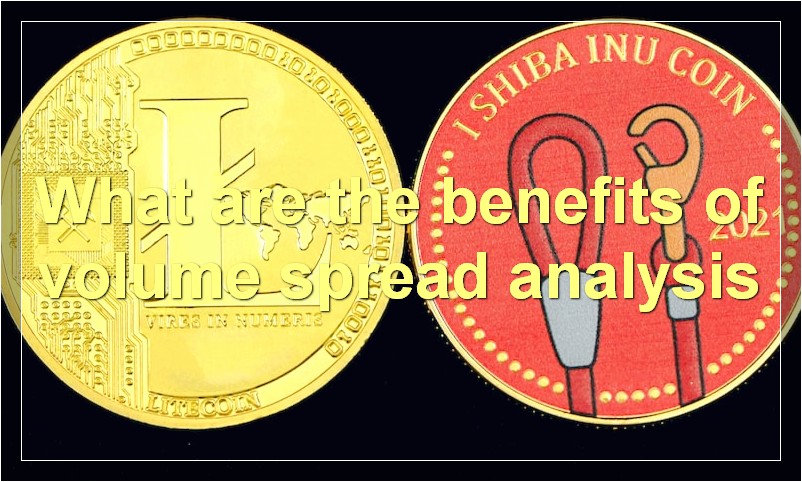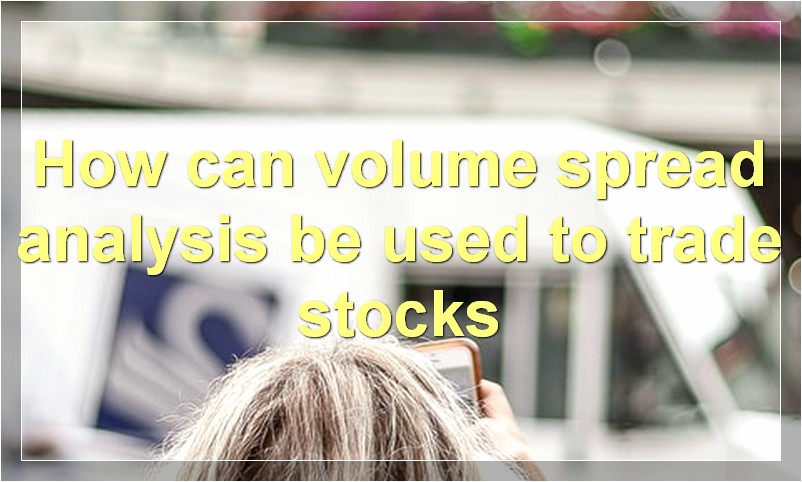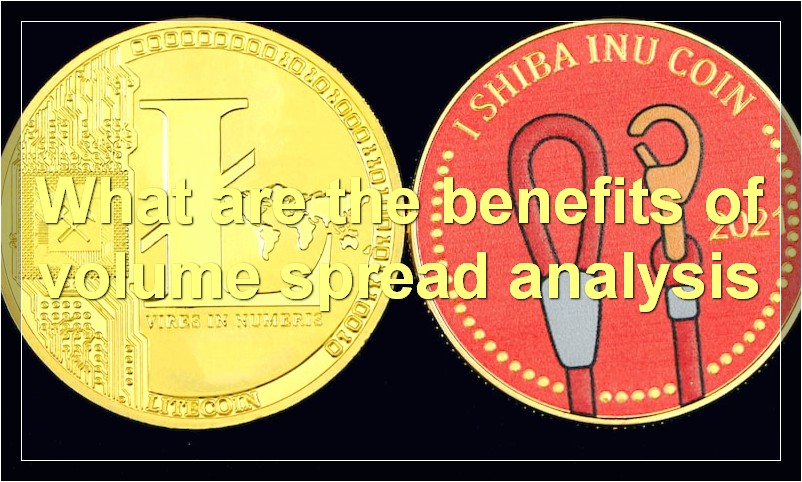Are you looking for a way to improve your trading? If so, then you need to learn about volume spread analysis (VSA). VSA is a powerful tool that can help you find better entry and exit points, as well as identify potential reversals. In this ultimate guide, we’ll show you everything you need to know about VSA.
What is volume spread analysis
In the world of trading, there are many different ways to analyze the markets and make decisions about where to enter and exit trades. Some traders focus on technical analysis, looking at things like charts and indicators to try to find patterns that can give them an edge. Others focus on fundamental analysis, paying attention to things like economic data and company financials.
One technique that combines elements of both technical and fundamental analysis is volume spread analysis (VSA). VSA is a tool that can be used to identify potential trading opportunities by looking at the relationship between price and volume.
When most people think of volume, they think of the number of shares traded in a stock or the number of contracts traded in a futures market. But in VSA, volume is analyzed in a different way. Instead of looking at the total number of shares or contracts traded, VSA looks at the ratio of up-volume to down-volume.
Up-volume is the volume traded on days when the price is moving up. Down-volume is the volume traded on days when the price is moving down. The up-volume to down-volume ratio is simply the number of shares traded on up-days divided by the number of shares traded on down-days.
If the up-volume to down-volume ratio is high, it means that more shares are being traded on up-days than down-days, which is bullish. If the ratio is low, it means that more shares are being traded on down-days than up-days, which is bearish.
A high up-volume to down-volume ratio indicates that there is strong buying pressure in the market and that prices are likely to continue moving higher. A low ratio indicates that there is strong selling pressure in the market and that prices are likely to continue moving lower.
Of course, like all technical indicators, VSA is not perfect. There will be times when the up-volume to down-volume ratio is high but prices still fall, or when the ratio is low but prices still rise. But over time, VSA can be a helpful tool for identifying potential trading opportunities.
What are the benefits of volume spread analysis

Volume spread analysis (VSA) is a powerful tool that traders can use to analyze the market and make better-informed trading decisions. By understanding how volume and price interact, traders can identify potential areas of support and resistance, as well as potential trend reversals.
VSA can be used on any time frame, from intraday charts to weekly or monthly charts. It is a versatile tool that can be used in conjunction with other technical indicators to provide a more complete picture of market activity.
There are many benefits of using VSA in your trading. Perhaps the most important benefit is that it can help you make more informed and accurate trading decisions. By understanding the relationship between volume and price, you can identify potential trading opportunities that you might otherwise miss.
In addition, VSA can help you to avoid false signals and bad trades. For example, if you see a sharp increase in volume on a price chart but the price doesn’t move higher, this could be a warning sign that the market is about to reverse.
Another benefit of VSA is that it can be used to confirm other technical indicators. For example, if you see a potential trading opportunity on a price chart but you’re not sure if it’s a good idea to take the trade, you can check the volume data to see if there’s any unusual activity that could confirm your suspicions.
Overall, VSA is a valuable tool that every trader should have in their arsenal. If you’re not already using VSA in your trading, we recommend that you start incorporating it into your analysis immediately.
How does volume spread analysis work
In order to understand how volume spread analysis works, one must first understand what volume is and how it is measured. Volume is the amount of space that a three-dimensional object occupies. It is measured in units of length cubed, such as cubic centimeters (cm3) or cubic meters (m3).
There are two types of volume spread analysis: intra-day and historical. Intra-day volume spread analysis looks at the volume of trades that occur during the day and tries to identify patterns. Historical volume spread analysis looks at the volume of trades over a longer period of time, such as a month or a year, and tries to identify trends.
Both types of volume spread analysis use similar methods to identify patterns. They both look at the price of the security and the volume of trades that occurred at that price. They then try to identify whether there is a relationship between the two. If there is a relationship, they will try to predict what will happen in the future based on that relationship.
What are the key principles of volume spread analysis
Volume spread analysis (VSA) is a technique that is used to identify the supply and demand in the market, as well as to forecast future market movements. The key principles of VSA are:
-The market is made up of buyers and sellers.
-Buyers and sellers have different motivations.
-The price of a security is determined by the forces of supply and demand.
-The volume of trading activity is a leading indicator of market direction.
-Price and volume tend to move in the same direction.
What are the main indicators used in volume spread analysis
Volume spread analysis is a technique that uses volume and price data to predict future market movements. The main indicators used in volume spread analysis are:
1) Volume: This is the number of contracts traded in a given period of time. The higher the volume, the more significant the market move.
2) Price: This is the price of each contract traded. The higher the price, the more significant the market move.
3) Spread: This is the difference between the bid and ask prices. The wider the spread, the more significant the market move.
How can volume spread analysis be used to trade stocks

Volume spread analysis is a technique that uses volume and price data to assess the strength of a given market move. By looking at the relationship between volume and price, traders can get a better sense of whether a move is likely to continue or reverse.
There are a few different ways to use volume spread analysis when trading stocks. One common approach is to look for divergences between volume and price. For example, if price is making new highs but volume is declining, this could be a sign that the rally is losing steam and may soon reverse.
Another way to use volume spread analysis is to watch for clusters of volume at key price levels. This can be an indication of support or resistance, which can be used to help make trading decisions.
Volume spread analysis can be a helpful tool for stock traders, especially when used in conjunction with other technical indicators. By keeping an eye on volume data, traders can get a better sense of whether a market move is likely to continue or reverse.
How can volume spread analysis be used to trade futures
Volume spread analysis is a technique that can be used to trade futures. This technique uses volume and price data to identify potential areas of support and resistance. By looking at the relationship between volume and price, traders can make informed decisions about where to enter and exit trades.
Volume spread analysis can be used to trade any type of future, including commodities, currencies, and stock indexes. The key to success with this technique is to understand how volume and price interact. Once you have a firm understanding of this relationship, you can begin to identify potential trading opportunities.
How can volume spread analysis be used to trade options
1.
Volume spread analysis is a technique that can be used to trade options. It involves looking at the volume of trading in a particular security and using this information to make decisions about buying or selling options.
2.
Volume spread analysis can be used to trade options by looking at the volume of trading in a particular security. This information can be used to make decisions about buying or selling options.
3.
By looking at the volume of trading in a particular security, traders can use volume spread analysis to make decisions about buying or selling options. This technique can be used to trade options profitably.
What are some common pitfalls in volume spread analysis
There are a few common pitfalls that can occur when using volume spread analysis to trade the markets. First, it is important to remember that volume spread analysis is a lagging indicator. This means that it will often give signals after the market has already moved. As a result, it is important to use other technical indicators or forms of analysis to confirm any signals that are generated by volume spread analysis.
Another common pitfall is to assume that all volume spikes indicate a change in market direction. This is not always the case, as volume can spike for a variety of reasons (such as large institutional orders). As such, it is important to look at the price action leading up to any significant volume spikes to determine if there is indeed a change in market direction.
Finally, it is also important to be aware that volume spread analysis works best in liquid markets. In less liquid markets, the data used to generate signals can be more sporadic and unreliable. As such, it is important to use other forms of technical analysis or market research when trading in less liquid markets.
How can volume spread analysis be used to improve trading results
Volume spread analysis is a technique that uses volume data to assess the strength of price action. It can be used to identify potential reversals, confirm trends, and make better-informed trading decisions. When volume is increasing, it indicates that there is more buying interest and that prices are likely to move higher. Conversely, decreasing volume often signals that prices are about to drop.
While most traders focus on price alone, those who use volume spread analysis believe that it provides valuable insight into market activity and future price movements. By considering both price and volume data, they can gain a more complete picture of what is happening in the market and make better-informed trading decisions.
While volume spread analysis is not an infallible predictor of future price movements, it can be a useful tool for those who want to get an edge in the market. Those who use it regularly often find that it improves their trading results.

